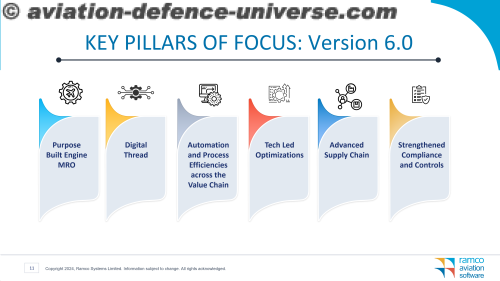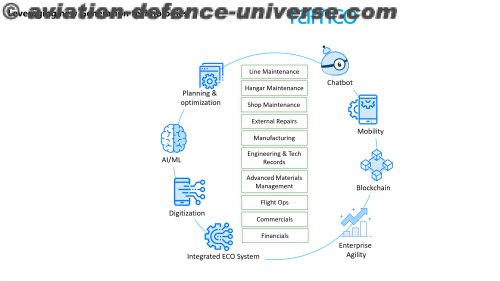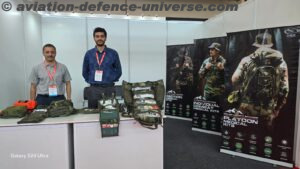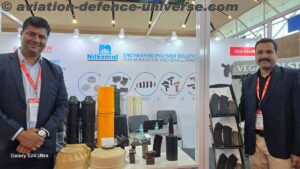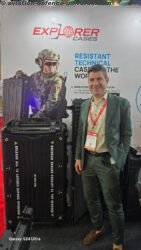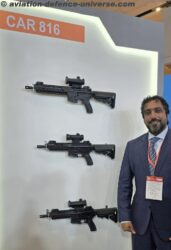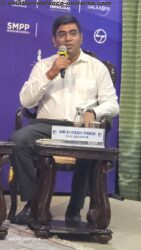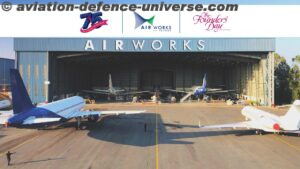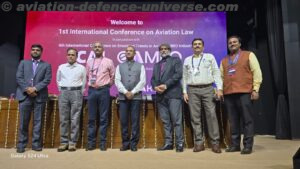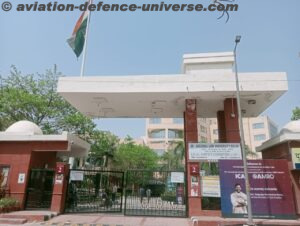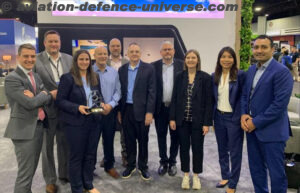New Delhi. 14 November 2024. In this exclusive interview, we delve into the future of aviation technology with Sam Jacob, CEO of Aviation, Aerospace, and Defence Business at Ramco Systems. The company recently unveiled Ramco Aviation Software 6.0, a major upgrade designed to address the increasing global demand for MRO services amid challenges like skilled labor shortages and supply chain disruptions. With a focus on digital transformation, in an exclusive interview with Aviation & Defence Universe (ADU) Sam Jacob shares insights on how Ramco is leveraging advanced technologies like AI, ML, and IoT to enhance its product offerings. He also discusses Ramco’s integration capabilities with legacy systems, cybersecurity measures, and contributions towards India’s Atmanirbhar Bharat initiative. We explore the company’s approach to predictive maintenance, support for UAVs and next-gen defence systems, and get a glimpse of upcoming innovations under his leadership.
ADU. What is the market potential of Ramco Aviation Software 6.0? How is it adding up to the future of aviation technology?
Sam Jacob. We see that the demand for engine MRO services is outpacing capacity globally due to increased aircraft utilization and stretched aircraft and engine retirements. The industry is also witnessing severe constraints on skilled labor and the supply chain. Our new release, 6.0, helps organizations manage their operations and resources, specifically to ease the constraints by process automation, optimization of resources and materials, and improved collaboration.
ADU. How does Ramco Systems ensure seamless integration of its aviation and defence software with legacy systems used by large organisations?
Sam Jacob. We have an IRIS platform, enabling us to develop and maintain APIs that seamlessly integrate legacy and other third-party systems. We have 200+ standard APIs, which our customers use to interface with 30+ systems, including SAP, Oracle, FedEx, etc. We also have an interface capability to support aviation standards such as SPEC 2000 to support our customers’ procurement and repair management processes.
ADU. Digital transformation is reshaping the aerospace and defence industries. How is Ramco leveraging technologies such as AI, ML, and IoT to enhance its product offerings?
Sam Jacob. The MRO maintenance process typically generates a wealth of data pertaining to defects, parts consumed, labor hours, elapsed time, etc. Accumulated over time, this data can be converted into a competitive advantage by leveraging AI/ML tools.
The machine learning capabilities of Ramco’s Aviation Suite leverage data and advanced algorithms to derive insights. For example, when mechanics report the defect, the system leverages the historical records pertaining to the type of aircraft and ATA code to suggest a list of similar defects that were resolved in the past. Based on the mechanic’s selection, the system prompts the resolution options, reference manuals, and parts and tools required to fix the defect. Here, the final determination of accepting the recommendations still lies with the mechanics. Our Aviation Suite has brought about a 30% reduction in turnaround time, especially for line maintenance functions.
ADU. Could you explain how Ramco’s solutions are enhancing maintenance, repair, and overhaul (MRO) processes, particularly with a focus on predictive maintenance?
Sam Jacob. The primary data sources used in predictive maintenance are flight data recorders (FDRs) and airframe and engine health monitoring (EHM /AHM). Our Aviation Software possesses interfaces to receive the selected data from these systems and holds maintenance-related data on all aircraft parts. We leverage historical data pertaining to areas such as non-routines, removals/NFF/MEL occurrences, operator maintenance programs and part reliability alongside operational data to make predictions. For example, while predicting an item removal through predictive maintenance, a system should also mention the potential replacement options available to keep the aircraft uptime and other parts which might also be required during replacement. Ramco’s Aviation Suite leverages machine learning to predict the part requirements and the best fulfilment options to reduce the duration of maintenance.
ADU. What role do you see cybersecurity playing in aviation and defence, and how is Ramco Systems preparing to address this critical need?
Sam Jacob. Cybersecurity in aerospace and defence is critical due to the sensitive nature of data and the significant risks associated with breaches. As the holders of this data, we take multiple measures to address this critical need. Data while in transit is encrypted using TLS1.2 and at rest is encrypted with AES algorithm with a minimum key length of 256 bits. Access control is restricted to named user levels with verifiable checks performed or through dual authentication. Our cloud networks have a Web Application Firewall to defend against external threats like SQL injection and cross-site scripting. Ramco’s information security policies and procedures are benchmarked and certified against ISO27001:2022. We are also assessed for SOC2 and SOC1.
ADU. How do you view Ramco’s role in contributing to India’s broader goals of Atmanirbhar Bharat (self-reliant India) in the aerospace and defence industries?
Sam Jacob. The Maintenance, Repair, and Overhaul (MRO) sector in India’s defence industry has been growing rapidly, fuelled by the country’s modernization drive, efforts towards self-reliance in defence production, and increased defence spending. The expanding fleet of military aircraft and other equipment presents a significant opportunity for local MRO providers to contribute to Atmanirbhar Bharat. Ramco Aviation Software is a Make In India product, and we believe our software has immense potential to address the requirements of MROs’ expanding fleet of military aircraft and their subsystems. Our software has been used for decades by leading Indian MROs like Air India Engineering Services and GMR.
ADU. With the rise of unmanned aerial vehicles (UAVs) and advanced military systems, how is Ramco addressing the software requirements for next-generation defence technologies?
Sam Jacob. Our software can address the end-to-end lifecycle of UAVs from manufacturing, test flights, in-field operations, MRO, parts supply chain, and regulatory compliance. We already have two customers in the UAV and UAM segments globally; our product is fully capable of addressing the requirements of the UAV, UAM, and EVTOL segments. We have deployed the software in the defence segments in compliance with defence regulations and data protection.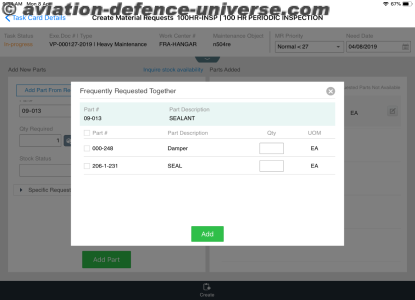
ADU. What’s next for Ramco Systems under your leadership? Are there any major projects or innovations on the horizon that we can look forward to?
Sam Jacob. Our investment in R&D has been consistent over the years, and it is the largest in similar software segments. We have 300+ employees in the unit with niche business and technology skill sets, and we are on target to implement our new version globally in the largest engine facility in Asia and a defence major in Canada. Our dedicated new-gen technologies teams continuously enrich the product through digital initiatives. We are currently working with two of our oldest customers to develop use cases through generative AI and expect to roll out the pilot deployments in early 2025. Ramco Systems stands at the forefront of the digital transformation wave in aviation and defence, with its comprehensive software suite that addresses a wide range of industry needs. The launch of Ramco Aviation Software 6.0 marks a significant leap in streamlining MRO processes through predictive maintenance and resource optimization. As the industry evolves towards enhanced connectivity and automation, Ramco’s investment in AI, ML, and cybersecurity ensures robust and future-ready solutions. With a strong focus on supporting India’s self-reliance goals and catering to emerging technologies like UAVs and EVTOLs, Ramco Systems is poised to be a key player in shaping the future of aviation and defence software.
As told to Sangeeta Saxena







































